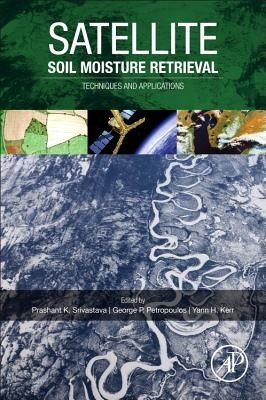
- We will send in 10–14 business days.
- Author: Prashant K Srivastava
- Publisher: Elsevier
- Year: 2016
- Pages: 440
- ISBN-10: 0128033886
- ISBN-13: 9780128033883
- Format: 15 x 23.1 x 2.5 cm, hardcover
- Language: English
- SAVE -10% with code: EXTRA
Reviews
Description
Satellite Soil Moisture Retrieval: Techniques and Applications offers readers a better understanding of the scientific underpinnings, development, and application of soil moisture retrieval techniques and their applications for environmental modeling and management, bringing together a collection of recent developments and rigorous applications of soil moisture retrieval techniques from optical and infrared datasets, such as the universal triangle method, vegetation indices based approaches, empirical models, and microwave techniques, particularly by utilizing earth observation datasets such as IRS III, MODIS, Landsat7, Landsat8, SMOS, AMSR-e, AMSR2 and the upcoming SMAP.
Through its coverage of a wide variety of soil moisture retrieval applications, including drought, flood, irrigation scheduling, weather forecasting, climate change, precipitation forecasting, and several others, this is the first book to promote synergistic and multidisciplinary activities among scientists and users working in the hydrometeorological sciences.
EXTRA 10 % discount with code: EXTRA
The promotion ends in 21d.02:15:18
The discount code is valid when purchasing from 10 €. Discounts do not stack.
- Author: Prashant K Srivastava
- Publisher: Elsevier
- Year: 2016
- Pages: 440
- ISBN-10: 0128033886
- ISBN-13: 9780128033883
- Format: 15 x 23.1 x 2.5 cm, hardcover
- Language: English English
Satellite Soil Moisture Retrieval: Techniques and Applications offers readers a better understanding of the scientific underpinnings, development, and application of soil moisture retrieval techniques and their applications for environmental modeling and management, bringing together a collection of recent developments and rigorous applications of soil moisture retrieval techniques from optical and infrared datasets, such as the universal triangle method, vegetation indices based approaches, empirical models, and microwave techniques, particularly by utilizing earth observation datasets such as IRS III, MODIS, Landsat7, Landsat8, SMOS, AMSR-e, AMSR2 and the upcoming SMAP.
Through its coverage of a wide variety of soil moisture retrieval applications, including drought, flood, irrigation scheduling, weather forecasting, climate change, precipitation forecasting, and several others, this is the first book to promote synergistic and multidisciplinary activities among scientists and users working in the hydrometeorological sciences.


Reviews